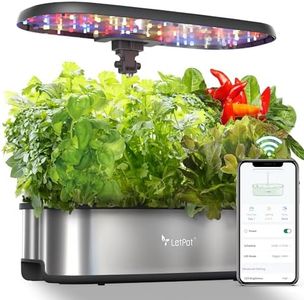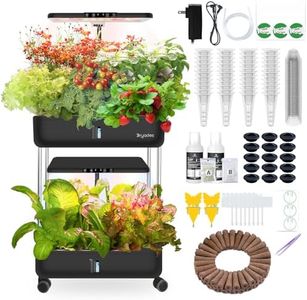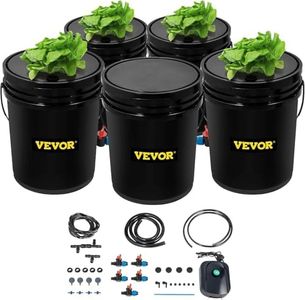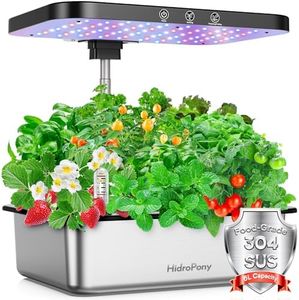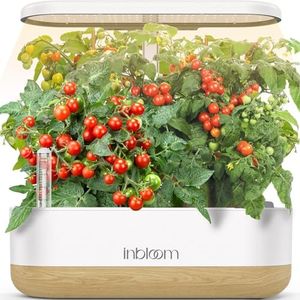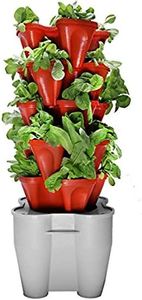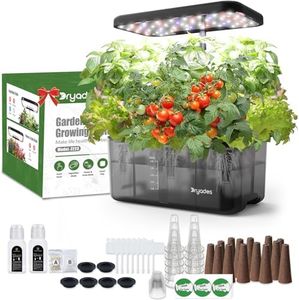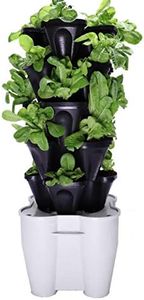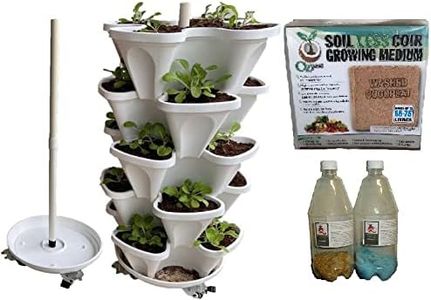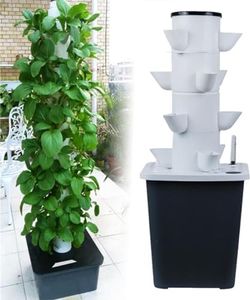We Use CookiesWe use cookies to enhance the security, performance,
functionality and for analytical and promotional activities. By continuing to browse this site you
are agreeing to our privacy policy
10 Best Hydroponic Garden Systems
From leading brands and best sellers available on the web.Buying Guide for the Best Hydroponic Garden Systems
Choosing the right hydroponic garden system means matching your gardening goals, available space, and preferred level of involvement with the features of the system. Before you decide, consider how much time you want to spend maintaining your garden, the kinds of plants you wish to grow, and the space you have at home. Instead of looking for the 'best' option on paper, focus on what works best for your personal needs and gardening habits. Understanding the main specs will help you narrow down your options and avoid feeling overwhelmed by the choices.System TypeSystem type refers to how the hydroponic garden delivers water and nutrients to the plants. Common types include deep water culture, nutrient film technique, ebb and flow, drip systems, and aeroponics. This is important because each type has different setup complexity, maintenance needs, and suitability for various plant types. For instance, deep water culture is often simple and beginner-friendly, while aeroponics can be more advanced and efficient. When navigating system types, consider your comfort with hands-on tasks and your willingness to learn about equipment. If you are new or want low-maintenance, simpler designs like deep water culture or wick systems could be ideal. If you're experienced and want to optimize yields, exploring more sophisticated systems is better.
Plant CapacityPlant capacity indicates how many plants the system can support at one time. It's crucial because it sets a limit on your growing ambitions—if you want a steady supply of herbs, greens, or vegetables, you need a system that accommodates your plans. Values range from small countertop units for a few plants to large systems for dozens. Divide the options into small (1-6 plants), medium (7-20 plants), and large (over 20 plants). If you just want fresh herbs for cooking, small or medium is fine. For families or those hoping to grow significant produce, larger systems are the way to go.
Lighting IntegrationLighting integration refers to whether the hydroponic garden includes built-in lights for growing plants indoors. This spec is key if natural sunlight is limited in your space. Some systems include adjustable LED lights, while others expect you to use natural light or buy separate lamps. Values can range from no lighting, fixed lighting, to fully adjustable and programmable lights. If your growing area doesn't receive sufficient sunlight, built-in lights with adjustable settings ensure healthy plant growth. Choose lighting based on your room's light levels and the demands of your chosen plants.
Water Reservoir SizeWater reservoir size is the amount of water the system holds, impacting how often you need to refill it and how stable the growing conditions are. This is important for convenience and plant health, since smaller reservoirs deplete faster and may require more attention. Sizes generally range from less than a gallon to several gallons. Small reservoirs suit users with few plants and time for regular checks, while larger reservoirs are good for users who prefer less maintenance or have bigger gardens. Match the reservoir size to the system's plant capacity and your routine.
Ease of MaintenanceEase of maintenance describes how simple it is to keep the hydroponic system clean, refill nutrients, and monitor plant health. Systems vary from hands-off, fully automated versions to ones needing frequent manual checks. This matters because more automation means less daily work, but sometimes higher upfront learning. Look for features like automatic timers, water level indicators, and simple parts for easy cleaning. If you want a low-maintenance hobby, seek more user-friendly, automated options. If you enjoy gardening work, manual systems might suit you better.
ExpandabilityExpandability tells you if the system can be easily scaled up by adding more plant sites or modules. It's important if you plan to grow your garden over time. Some systems are fixed in size, while others let you connect extra units. If you're starting small but hope to grow more varieties or quantities later, choose a modular or expandable system. For those with limited space or those who want a set-and-forget setup, a fixed-size system is often enough.
